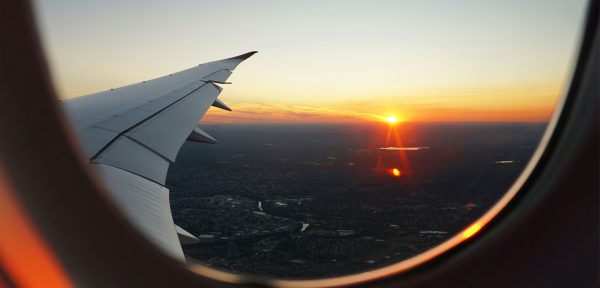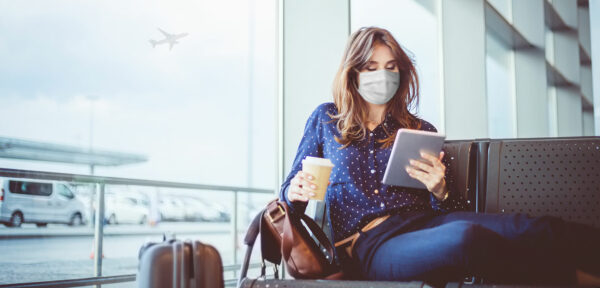New Fuel/Energy Rules Launched by EASA
The European Union Aviation Safety Agency (EASA) recently announced new rules designed to enable air operators to reduce the fuel quantity they are carrying during operations which, in turn, is expected to reduce their flights’ CO2 emissions and related environmental impacts. Currently, aircraft must carry sufficient fuel to ensure safe operations in the event of a flight plan change causing a delay on approach and/or a revised destination stemming from severe weather or other deterrents. With additional fuel comes increased aircraft weight which then increases the aircraft’s fuel consumption and related carbon footprint. The new regulations, which reflect guidance from the International Civil Aviation Organization (ICAO), enable the optimization of the amount of fuel required to be carried thereby facilitating lower CO2 emissions. Airlines can easily transition from the current rules to the new EASA rules, selecting from three fuel plans: a basic fuel scheme, fuel scheme with variations, and individual fuel scheme.
EASA Flight Standards Director Jesper Rasmussen stated, “This regulatory package is part of the overall efforts of EASA to reduce the impact of aviation on the environment. There is no reason to lift up more fuel reserves into the sky than necessary – lifting fuel burns more fuel. More importantly, this can be done without compromising safety – the reduction is possible thanks to better assessment methods and better data which allow airlines to carry out a more precise risk assessment.”
Among the benefits projected to be gained from the new EASA Fuel/Energy Rules are potential savings of 3 million tons of CO2 based on an assumption that 1 ton of fuel produces 3 tons of CO2.
Projecting Air Passenger Numbers to Recover in 2024
Looking ahead, the International Air Transport Association (IATA) is now projecting 2024 to be the year when air passenger travel figures will reach 4 billion which will exceed pre-pandemic levels at 103% of 2019 numbers. Changing government regulations in certain markets was the primary factor cited.
“The biggest and most immediate drivers of passenger numbers are the restrictions that government place on travel,” said IATA’s Director General Willie Walsh. “Fortunately, more governments have understood that travel restrictions have little to no long-term impact on the spread of a virus. And the economic and social hardship caused for very limited benefit is simply no longer acceptable in a growing number of markets. As a result, the progressive removal of restrictions is giving a much-needed boost to the prospects for travel.”
As for how passenger numbers have been rising, in 2021, overall traveler numbers were 47% of 2019 levels and are expected to grow to 83% in 2022, and 94% in 2023. By 2024, a 103% increase is expected and by 2025, a 111% increase is projected. Segmenting out international travel, in 2021, passenger numbers were 27% of 2019 levels and are expected to improve to 69% in 2022, 82% in 2023, 92% in 2024, and 101% in 2025.
Going forward, IATA is still asking for other measures to help drive further increases in passenger numbers. These include: removing all travel barriers including quarantines and testing for fully-vaccinated passengers with a WHO-approved vaccine, pre-departure antigen testing to enable quarantine-free travel for non-vaccinated travelers, removing all travel bans, and accelerating the ease of travel restrictions.
Remote Working Viewed as a Way to Boost Business Travel
Could a continuation of remote working help drive more business travel? Some industry insiders think so. It is true that many businesses have now adopted a model which allows for remote working having seen its positive effects on employees. While many businesses have returned their full staff back to the office, there remains a large number of companies that now have a hybrid model with some workers in the others and others still working from home. American Express, for instance, has a 60-40 model currently operating, with 60% of its workers in the office and 40% working remotely. There are even some companies, in particular, large technology firms, indicating that many employees don’t believe they will be back in a traditional desk setting at all. Only time will tell. However, there is the thought that with less commuting back and forth to the office, business travel may become more appealing.
That’s good news for the travel and hospitality industry. The American Hotel & Lodging Association projects a trend toward fewer big conferences, but longer stay destination travel experiences.
Buy-Now, Pay-Later Options Viewed as Another Way to Boost the Recovery
To attract more passengers, airlines are teaming up with fintech companies to provide a buy now, pay later solution. With Millennials and Generation Z consumers especially in mind, the airlines believe this low-cost travel option can help passengers travel even if they took a financial hit during the pandemic as data suggests.
According to the GlobalData Q4 2021 Consumer Survey, 34% of Gen Z and 36% of Millennials expressed extreme concern over their personal financial situation. Giving these younger generation consumers a way to leverage technological advancements, which is particularly appealing to them, and accommodate their current disposable income and savings situation, is expected to attract more passengers.
One fintech providing airlines with a buy now, pay later solution is Uplift. It is currently working with Southwest Airlines in a solution that enables consumers to book their Southwest flights to the Hawaiian Islands with interest-free payment options. Southwest is making its promotion available for purchases starting at $49 one-way for three- or six-month terms, with no late fees of prepayment penalties. Consumers can book and fly before completing their payments.
Another airline offering a flexible payment option is Delta which has joint ventured with American Express. Delta’s model allows Amex customers to divide their Delta purchases into monthly payments for an additional fee when booking online.
Payment options being offered by Southwest and Delta are believed to be an effective way to attract passengers and help boost the recovery.





0 comments on “Aviation Wrap-Up March 2022”